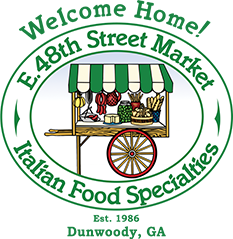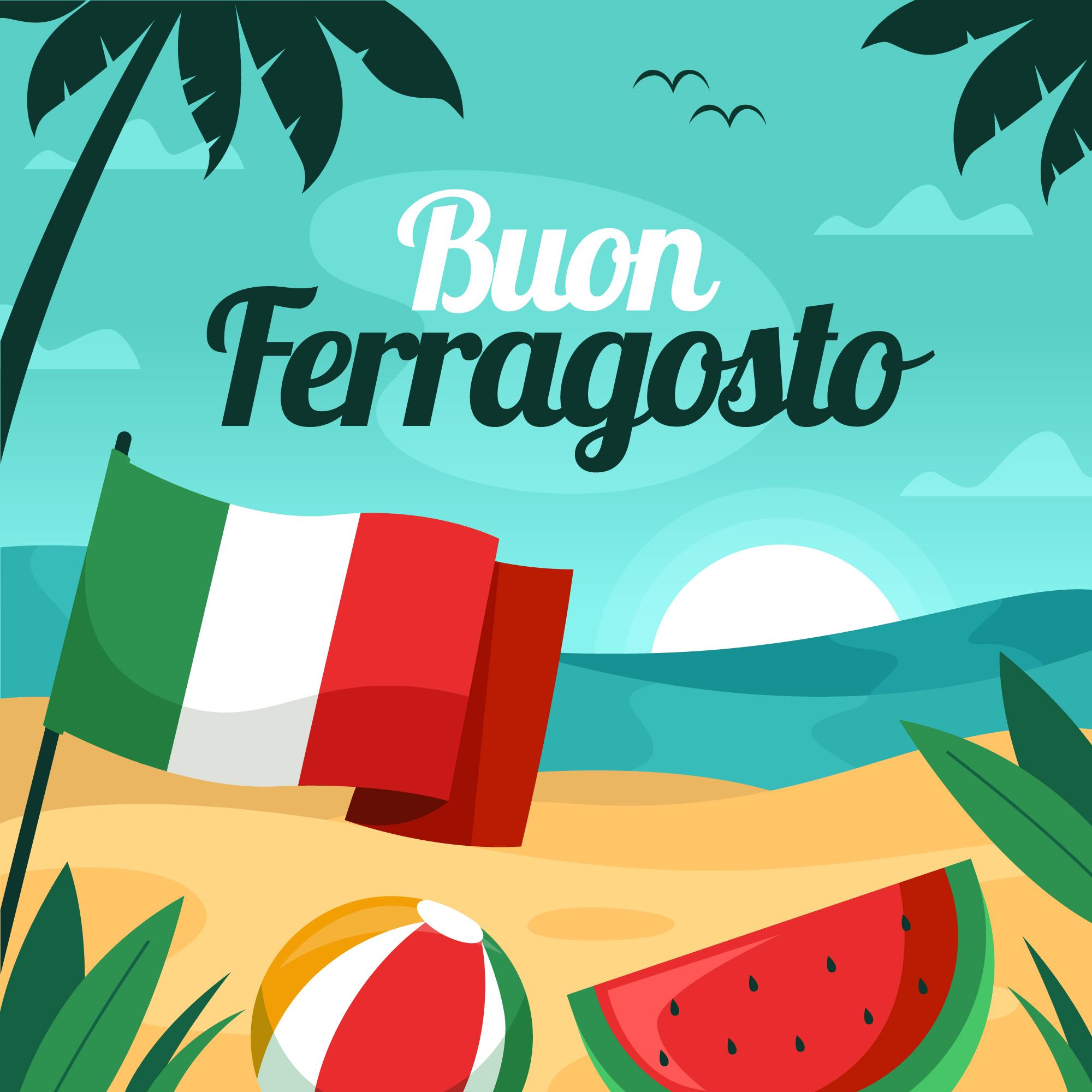 Ferragosto is a typically Italian holiday, that isn’t celebrated anywhere else in the world. While the 15th of August is honored in Catholic countries as the day of Mary’s Ascension to Heaven, Ferragosto in Italy doesn’t have only a religious meaning, but a historical and socio-cultural one, too. It is, for us, the symbol of summer holidays and, at once, also that of the end of summer: yes, I know there is still a month to go, but everything feels like it’s winding down after the 15th of August. Kids start thinking about school, adults begin taking out the closet their fall garments and umbrellas. As a person who doesn’t particularly enjoy the heat of summer, I personally embrace Ferragosto celebrations for this reason.
Ferragosto is a typically Italian holiday, that isn’t celebrated anywhere else in the world. While the 15th of August is honored in Catholic countries as the day of Mary’s Ascension to Heaven, Ferragosto in Italy doesn’t have only a religious meaning, but a historical and socio-cultural one, too. It is, for us, the symbol of summer holidays and, at once, also that of the end of summer: yes, I know there is still a month to go, but everything feels like it’s winding down after the 15th of August. Kids start thinking about school, adults begin taking out the closet their fall garments and umbrellas. As a person who doesn’t particularly enjoy the heat of summer, I personally embrace Ferragosto celebrations for this reason.
The name Ferragosto comes from the Latin Feriae Augusti, that is, “the rest of Augustus.” Indeed, not only this day, but the whole month of August takes its name from Octavian Augustus, first leader of Rome’s glorious Empire and a demi-god to his subjects.
Originally, August was called sextilis, that is, the sixth month of the year, as in those times the new year began about two months after our modern January. Julius Caesar had previously made the quintilis, or the fifth month (our July, of course) his own, calling it Iulius: it was only natural for Octavian, Julius Caesar’s own grandnephew and chosen heir, to claim the following month as his own.
In order to gain visibility and appreciation across society, Augustus decided that, within the month dedicated to him, there had to be a day of holiday and rest for everyone, slaves included: he picked the very middle of the month, the 15th. And that’s why we celebrate the Feriae Augusti, or Ferragosto, on that day. In ancient times, fairs and horse races would take place and it was customary for farm laborers to received some money from their landlords.
But the Feriae Augusti are pretty interesting also from a linguistic point of view, as they can tell us a lot about what the Emperor really expected from the institution of the feast. The choice of the word feriae, which in Latin is used only at the plural, and refers to religious holidays taking place every year regularly, is very telling. Professor Maria Jennifer Falcone of the University of Cremona explains that the root of the word feriae, “*fer-,” connects directly to festivities dedicated to the gods. From this, we can deduct Augustus wanted his holiday to be celebrated like a divinity’s, that is, with feasting and zero work.
The Feriae Augusti were instituted in 18 BC and were strongly associated also to the Consualia, the Roman holiday dedicated to Consus, god of fertility and soil: the Consualia also celebrated the end of agricultural work in the fields and were the beginning of a time of rest for farmers. Undoubtedly, the connection between Augustus and the Divine was strengthened further by the connection between an already known, traditional divine celebration, and his own newly-instituted holiday.
The creation of such festivities was also a political act. Augustus placed himself in a position of semi-divine power, but left untouched the role and relevance of the Senate, aware that Rome would not have accepted a return to monarchic rule; he cleverly bypassed the issue by stepping further up the ladder, associating himself not with the figure of a king, but that of a god. His divine lineage was further cemented by Virgil in his Aeneid, where he traced Augustus’ origins all the way back to Venus, the goddess of Beauty and mother of Aeneas.
With the rise of Christianity, the Feriae Augusti became associated with a Christian feast, much as it happened for Christmas; since the 7th century AD, Catholics across the globe celebrate, on the 15th of August, the day of Mary’s Assumption to Heaven, that is, her entering Paradise with both her soul and body, just like her Son did. Across Italy, celebrations of this festivity often include fairs and traditional holy processions that often involve local brass bands and confraternities.
Some may find curious that the Palio di Siena, which also takes places in August, on the 16th, and other famous horse races like the Palio dell’Argentario in Porto Santo Stefano, or the Giostra del Saracino in Sarteano, were all originally conceived to keep alive the Roman games of the Feriae Augusti, creating an ideal line between Ancient Rome and modern Italy through, of course, the important influence of the Middle Ages and the Renaissance, when these races – the Palio di Siena in particular – began being linked with the festivity of the Assumption.
During the Ventennio, Italy’s time under the Fascists, propaganda invited Italians to enjoy a day out with the family on Ferragosto, just like the Romans would have done 2000 years earlier: just another way to create a connection between Fascism and the Empire, something Mussolini was quite keen on doing. The idea was to create a state-supported holiday, much like the one Augustus had envisaged 2000 years earlier: workers’ associations – they were called associazioni dopolavoristiche – would organize hundreds of day trips for workers and their families all over the country and Mussolini, to support even further the initiative, introduced special trains, the treni popolari di Ferragosto, with reduced fares. This enabled even lower income families to travel and enjoy a day by the sea, in the mountains or visiting one of our many art cities. The treni popolari di Ferragosto offer would run from the 13th to the 15th of the month and came in two versions: a one-day pass, for daily trips within a 50-100 km distance (31 to 62 miles), and a three-day pass, for trips between 100 and 200 km (62 to 93 miles). The institutionalization of Ferragosto and the reduced-fare trains offered by the regime marked an important moment in the history of Italian habits and contemporary traditions because, for the first time, many families were able to travel recreationally. As the offer covered only train fares, people would bring along packed meals with them, marking the beginning of another popular tradition, that of the pranzo al sacco (packed lunch). Italians being Italians, pranzo al sacco could include anything from sandwiches to savory pies, salads, pizzas and focaccias. In the 1950s, another important tradition of Ferragosto began, the barbecue: still today, grilling remains one of Italy’s favorite things to do on the 15th of August.
Let’s stay in the kitchen because, as it happens for all important festivities, Ferragosto has a special menu, too. In the past, it was customary to prepare roasted pigeon with rice, sausages and porcini mushrooms, especially in the North and in Tuscany; in Rome, you’d find chicken and peppers, while margheritine di Stresa were typical in Piemonte, as their name suggests (Stresa is a beautiful locality on the Lake Maggiore). These little, flower-shaped cookies deserve some attention because of their history and curious recipe: they were created in 1857 by pastry chef Pietro Antonio Bolongaro, in occasion of the first holy communion of Princess Margherita of Savoia, and what makes them special is the use of boiled egg yolks – along with sugar, butter and vanilla – for their preparation. Legends say the Savoias loved them so much they became a staple on their table for Ferragosto celebrations.
The 15th of August in Naples traditionally means frittata di maccheroni, a delicious frittata made with long pasta, eggs, cheese and served, of course, in slices; in Apulia, Ferragosto is orecchiette con cime di rapa, one of Italian cuisine’s most popular dishes, while Calabria is all about pasta chijna, typically prepared for important festivities, the most famous version of which includes ragù and meatballs. Sunny Sicily keeps cool with gelo di melone, a delicious dessert made with watermelon (yes, we call it anguria in Italian, but in Sicily it’s also known as melone), cinnamon and jasmine.
Ferragosto is the climax of summer, a day we like to spend with friends and family, often having a barbeque together. It falls during the weeks when most factories close for the holidays and the majority of Italians drive to seaside locations for their canonical sea-and-sand vacation. For this reason, traveling around the period can be an adventure: it is usually advised to avoid the freeway on the days immediately before and after the 15th and today many avoid traveling around Ferragosto altogether, in spite of tradition, preferring a dinner with friends or the always popular back garden barbecue.
But as I said in the opening lines of this article, Ferragosto also brings along a light sense of melancholy with it, because it’s the last summer holiday we have, and we realize the fall is just around the corner. The morning of the 16th is a summer hungover, often permeated with a sense of exhaustion and, in many a way, a longing for the fall’s well-established routines; it’s time to start packing school bags and, perhaps, taking advantage of the beach in the early days of September, usually mild in climate, for one last dip in the sea.
By Giulia Franceschini

